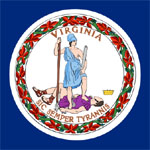The widening of Interstate 66 inside the Capital Beltway is moving forward.
Virginia Gov. Robert F. McDonnell this week hailed a $10.2 million contract that was awarded to a construction firm for spot improvements on the four-lane highway inside the Beltway.
Orange cones and construction signs should be going up in the area later this summer.
The improvements will connect the westbound acceleration lane/deceleration lane pavement sections between the ramp to Fairfax Drive, near George Mason Drive, and Sycamore Street, near the East Falls Church Metro station, according to a press release from McDonnell’s office.
Construction will begin at the Fairfax Drive ramp near the George Mason Drive entrance ramp to I-66 west, and will end at the Sycamore Street ramp – a 1.9 mile distance. The entrance ramp acceleration lane and the exit ramp deceleration lane will be lengthened until they meet to form a continuous lane between both ramps, a McDonnell spokeswoman said.
In addition, a new 12-foot shoulder lane will be constructed which will carry emergency vehicles and could be used in emergency situations, she added.
Widening I-66 inside the Beltway has long been a hot issue for debate, regularly opposed by residents who live in Arlington. Those who use I-66 from points outside the Beltway, including Prince William County and Manassas, have long called for the widening of the road to relieve the bottleneck created when the number of lanes at the Beltway decreases, from six to four.
McDonnell’s office said the contract was delayed due to litigation, but a recent court decision the state’s favor will allow the highway improvements to move forward.
The improvements should not only make commuting easier and safer, but also would increase the evacuation capability of the nation’s capital in the event of an emergency, McDonnell said. However, some Arlington officials have objected to the project.


 Governor Robert McDonnell has appointed two Arlington lawmakers to his government reform panel.
Governor Robert McDonnell has appointed two Arlington lawmakers to his government reform panel. Virginia’s governor wants to revive the effort to put toll lanes on Interstate 395.
Virginia’s governor wants to revive the effort to put toll lanes on Interstate 395.